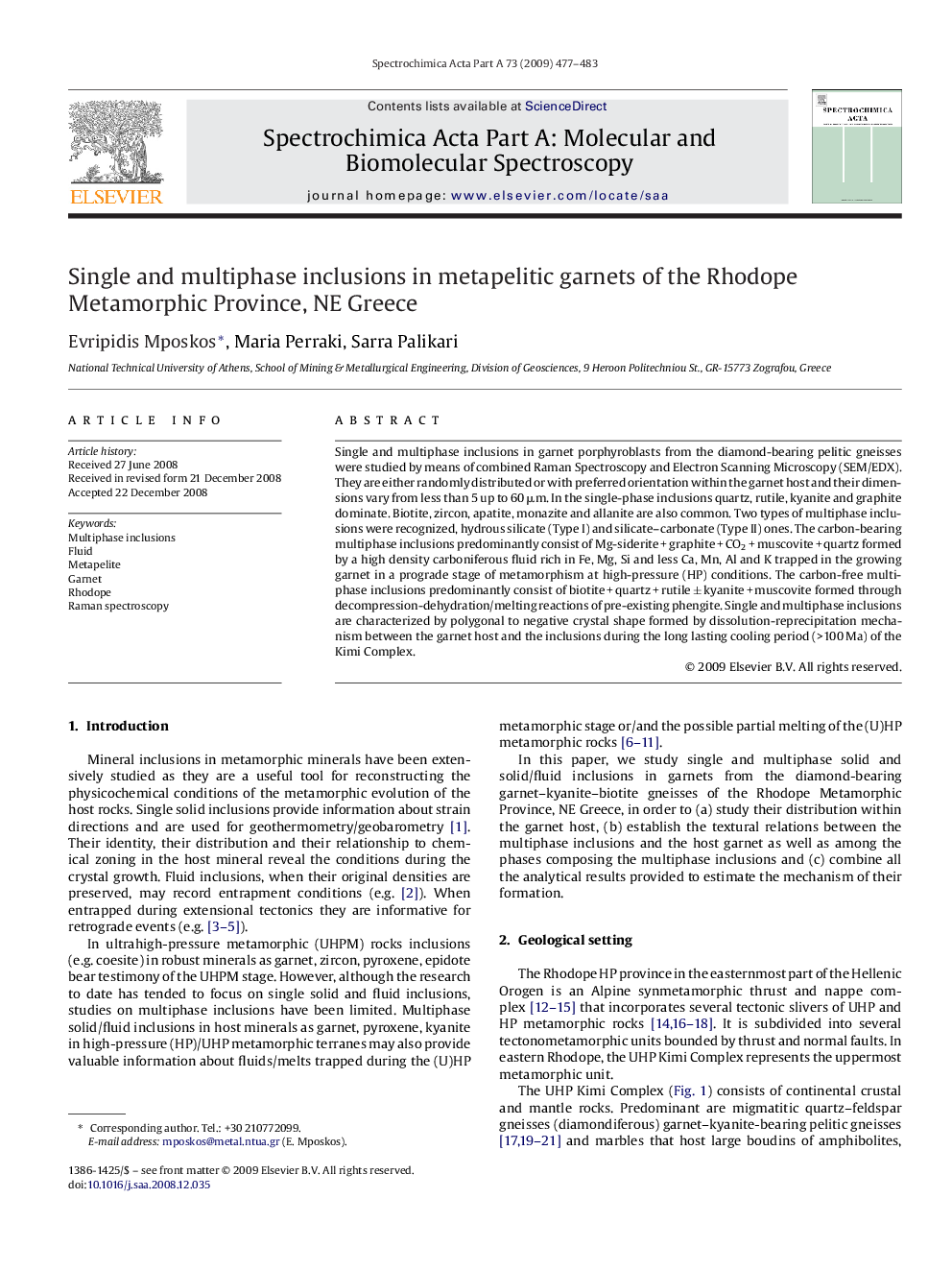| Article ID | Journal | Published Year | Pages | File Type |
|---|---|---|---|---|
| 1233355 | Spectrochimica Acta Part A: Molecular and Biomolecular Spectroscopy | 2009 | 7 Pages |
Single and multiphase inclusions in garnet porphyroblasts from the diamond-bearing pelitic gneisses were studied by means of combined Raman Spectroscopy and Electron Scanning Microscopy (SEM/EDX). They are either randomly distributed or with preferred orientation within the garnet host and their dimensions vary from less than 5 up to 60 μm. In the single-phase inclusions quartz, rutile, kyanite and graphite dominate. Biotite, zircon, apatite, monazite and allanite are also common. Two types of multiphase inclusions were recognized, hydrous silicate (Type I) and silicate–carbonate (Type II) ones. The carbon-bearing multiphase inclusions predominantly consist of Mg-siderite + graphite + CO2 + muscovite + quartz formed by a high density carboniferous fluid rich in Fe, Mg, Si and less Ca, Mn, Al and K trapped in the growing garnet in a prograde stage of metamorphism at high-pressure (HP) conditions. The carbon-free multiphase inclusions predominantly consist of biotite + quartz + rutile ± kyanite + muscovite formed through decompression-dehydration/melting reactions of pre-existing phengite. Single and multiphase inclusions are characterized by polygonal to negative crystal shape formed by dissolution-reprecipitation mechanism between the garnet host and the inclusions during the long lasting cooling period (>100 Ma) of the Kimi Complex.
